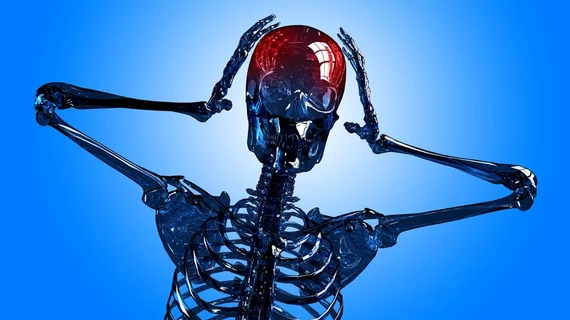New scoring system predicts rupture risk for patients with arteriovenous malformations
Experts recently developed a scoring system based on imaging that can predict the long-term risk of hemorrhage of unruptured brain arteriovenous malformations (AVMs).
The risk stratification system was put to the test in more than 3,000 cases and proved itself to be a beneficial tool in predicting future AVM rupture across multiple risk groups. Experts involved in the system’s development and validation suggest that its use could help low-risk patients to avoid invasive preventative procedures that carry additional risks of adverse events.
Details of the work were published in JAMA on March 1.
“Although several grading scales have been proposed and are widely used to evaluate operability or treatment outcomes, it remains debatable whether interventional therapy can benefit patients with AVMs,” corresponding author of the new paper Xiaolin Chen, MD, with the Department of Neurosurgery at Beijing Tiantan Hospital in China, and colleagues explained. “Therefore, these options should be weighed against the patient’s natural hemorrhagic risks, which may vary widely across AVMs with different features.”
The system is based on four risk factors that can be identified on MR imaging—ventricular system involvement, venous aneurysm, deep location and exclusively deep drainage (VALE). It was derived from a single-center cohort and validated in a multicenter external cohort and a conservative treatment cohort, totaling 3,962 cases of patients with confirmed AVMs.
The VALE system yielded good results in each of the three cohorts, achieving AUROCs ranging from .73 to .85, respectively. Accordingly, the 10-year hemorrhage-free rate was the highest in the low-risk group and lowest in the high-risk group, which the system’s scores were in line with.
“These findings suggest the VALE scoring system is a reliable and applicable tool that may be used to help identify those who can benefit from early intervention,” the group noted, adding that the model could help guide providers and patients in decision-making regarding AVM management, potentially reducing unnecessary interventions.
To learn more, click here.

